ABSTRACT
Research Questions
- How to create an engaging brand experience in marketing context?
- How does an engaging brand experience affect consumer attitudes and brand image?
Purpose of the Study
The authors propose that the relationship between brand experience and formation of brand loyalty can be mediated by brand affect: positive attitude and brand image. The study discovers the components of an engaging brand experience and indicates their effect on consumer attitudes and brand image.
Methodology
The study consists of primary data and literature. A survey based quantitative approach with 346 respondents is used in answering the research questions.
Conclusion
An engaging brand experience can be delivered by enabling seamless interaction between the consumer and the brand, involving the consumer with the brand at the consumer’s own will, and by ensuring that all the communication efforts as well as the content of each of the brand’s touch points is consistent. By delivering such brand experiences, positive attitudes and brand image; brand affect, can be generated and brand loyalty affected.
LITERATURE REVIEW

Figure 1: Loyalty phases. Own illustration based on Oliver’s Loyalty phases (1999, p. 35).
The process continues as theorized: the affective phase affects the conative loyalty phase positively. When confined with the cognitive evaluation after the first time of purchasing, the combination of the three lead to permanent action loyalty. However, the stages are not linear and each phase can affect the other ones. This study further posits that the process can be started through marketing communications, through an engaging brand experience to be specific (See figure 1).
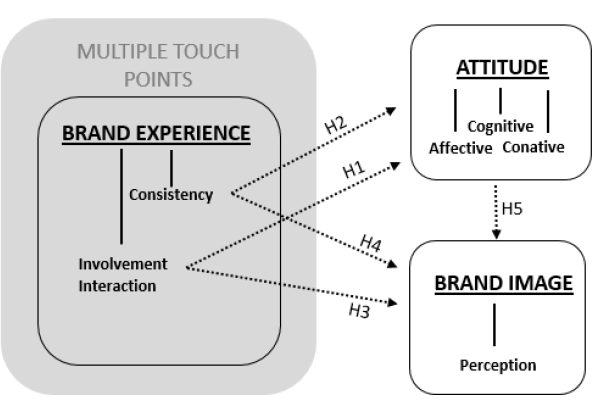
Figure 2: Conceptual development connecting the central concepts presented in the literature review. (Own illustration).
The conceptual development in Figure 2 (p.13) describes the theoretical framework with specific concepts derived from the previously reviewed literature and places the hypothesizes of the study to the framework. The purpose of the model is to connect the most relevant concepts and create a theoretical base for answering the research questions.
METHODS
Selection of Topic and the Research Process
The interest towards the topic arose from following public writing and discussing with marketing practitioners. The advertising noise that consumers are surrounded by nowadays, is making it more and more difficult for brands to gain consumers’ attention through marketing communications. Practitioners are looking for cues on how to design successful marketing communication activities, which led the authors to examine the characters which effectively commit consumers to brands.
As many scholars (Aaker, 1991; Dick & Basu, 1994; Amine, 1998) state, attitudinal commitment has a strong influence on brand loyalty and purchasing behavior. Therefore the “mental commitment”, attitudes, turned out to be the goal to reach through marketing communications. Attitudes and brand image can be affected by providing brand experiences (Solomon et al., 2010. P. 277-280). In our study, we wanted to examine how an engaging brand experience in marketing communications is created and whether it leads to positive attitude and thus, brand image.
FINDINGS AND ANALYSIS
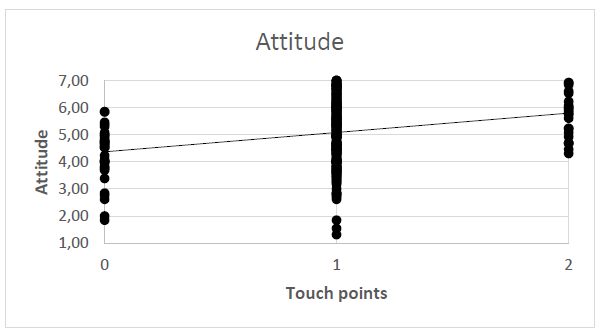
Figure 3: Correlation between touch point exposure and attitude.
Figure 3 illustrates the correlation between the consumers’ exposure to touch points and attitude. In the chart, the trend line shows a positive correlation. The correlation coefficient between the number of touch points and the numerical attitude value of the respondents’ answers is 0.26, which, according to Cohen (1977) means there is a weak correlation.
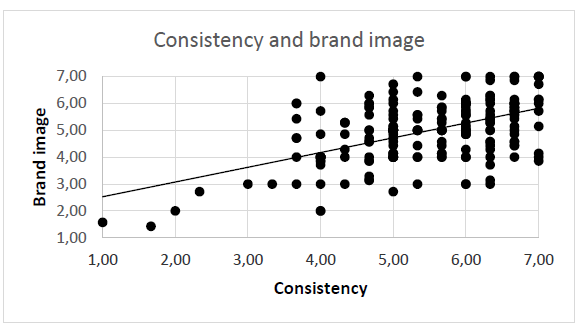
Figure 6: Correlation between perceived consistency and brand image.
In figure 6, comparing the brand image related answers to the answers related to the perceived consistency in the whole respondent group, the chart shows a correlation between consistency and brand image. The correlation coefficient is 0.52, indicating a strong correlation.
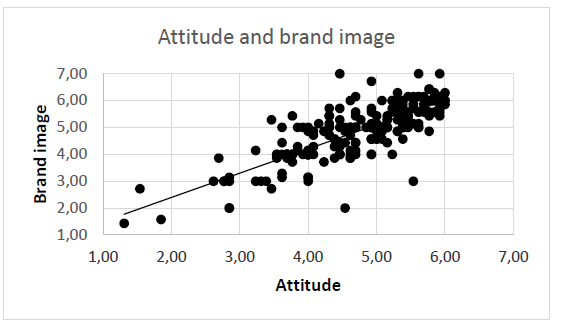
Figure 7: Correlation between attitude and brand image.
The presumption was that when the engaging brand experience functions as the mediator, the brand image correlates with positive attitude. In Figure 7, attitude and brand image were placed on the X Y axis by individual responses to the overall attitudinal questions and brand image related questions. The trend line shows a correlation between attitude and brand image. The calculated correlation coefficient is 0.78, meaning a strong correlation.
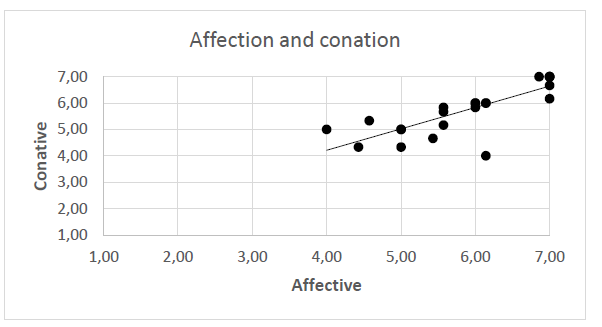
Figure 8: Correlation between affection and conation in the three component attitude model.
Given that the touch point exposure correlated positively with attitude and brand image, it is also meaningful to examine the attitude components in more detail. Oliver (1999) posited that an individual’s affection towards an object has an impact on the individual’s future behavior. As a finding in this study, the affective dimension of the attitude had a positive correlation with the conative dimension. The correlation factor was 0.80, indicating a strong correlation.
CONCLUSION
The task of attracting consumers’ attention is challenging and companies must constantly come up with branding strategies that make the consumers remember the brand. In order to remember and prefer a brand, consumers must have an individual brand-related experience (Schmitt 1999). By understanding how consumers behave and consume, successful marketers exploit those insights in designing engaging marketing, with the aim of creating brand loyalty.
The main focus of this study has been to investigate how to create an engaging brand experience in marketing context and whether it has positive effects on consumers’ attitudes towards a brand and the brand image. As a result, the designed brand experience consisted of three components of involvement, interaction and consistency, and affected the consumers’ attitudes positively and strengthened the brand image. As an outcome, delivering engaging brand experiences to consumers through marketing communications is an effective way to affect and change consumers’ attitudes and brand image, as posited by the scholars Solomon et al. (2010) and Chaudhuri and Holbrook (2001).
If the experience is perceived positive by the consumer, it results in positive attitude and brand image, which provably affect the consumers’ intentions to recommend and use the brand in the future. An intention to use and recommend the brand indicate attitudinal commitment to the brand, which was also presented to be the outcome of individual, positive brand experience by several scholars such as Iglesias et al. (2011), Thompson et al. (2006), Johnson and Grayson (2005) and De Chernatony and Segal-Horn (2003).
Simultaneously, purely emotional ties between consumers and brands can lead to action by the consumer, and reduce the need for cognitive reasoning behind purchase decisions. The finding is similar to that of Oliver (1999) positing that brand loyalty can form at any attitudinal phase and cognition does not have to be the first stage of becoming loyal to a brand. Based on the above arguments, it can be concluded that an engaging brand experience in marketing context can influence brand loyalty by generating positive brand affect. The strong influence of brand affect in the process was evidenced in this study, just as it was also highlighted by variety of scholars such as Johnson and Grayson (2005), Amine (1998) and Aaker (1991).
Source: Mälardalen University
Authors: Anni Isotalo | Samu Watanen